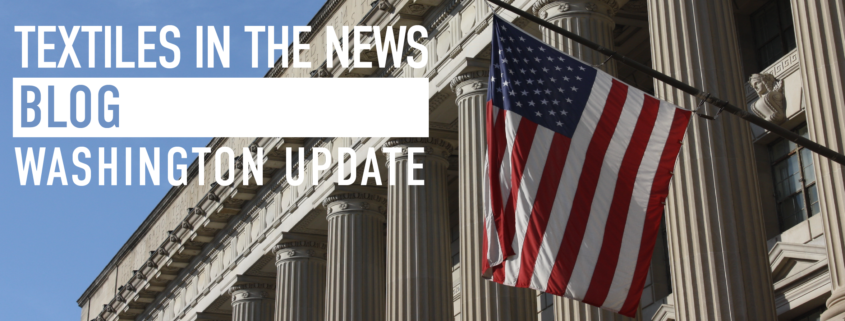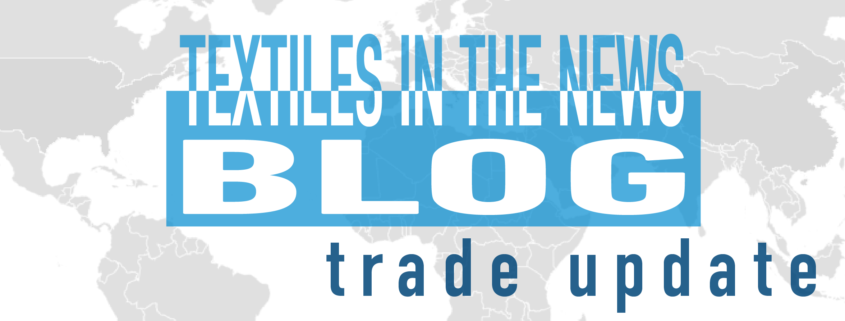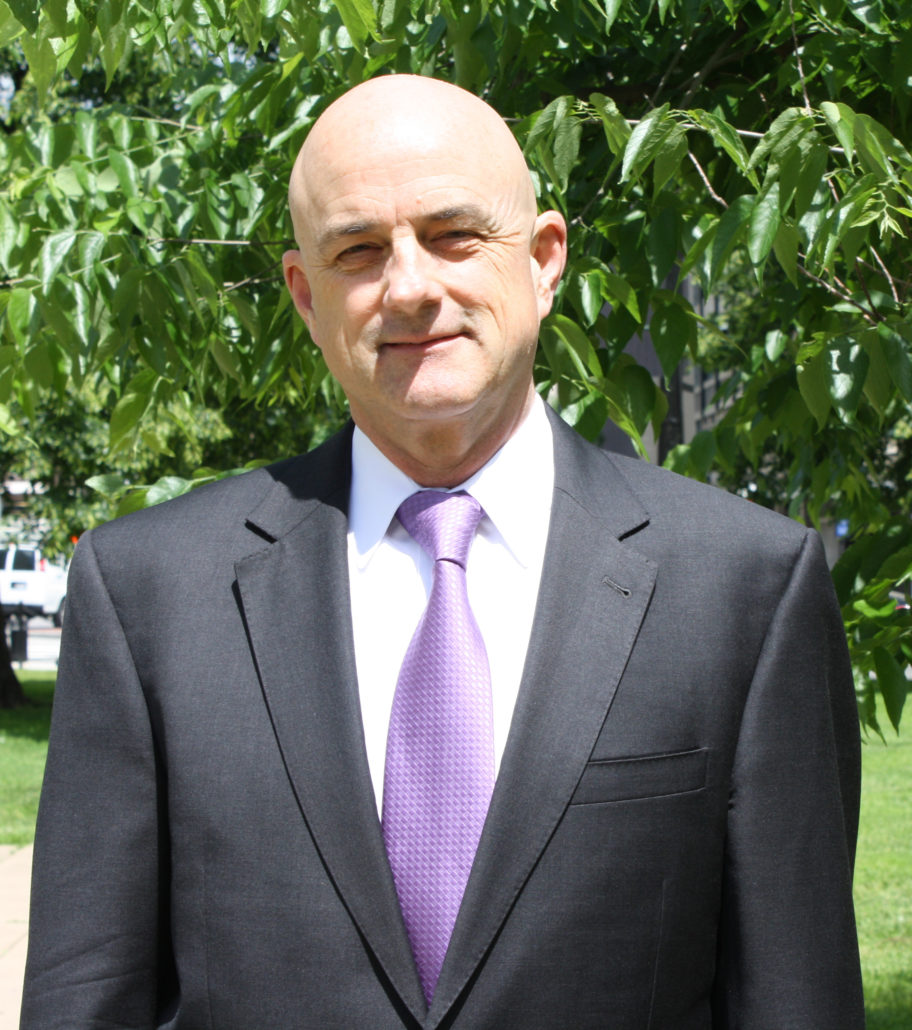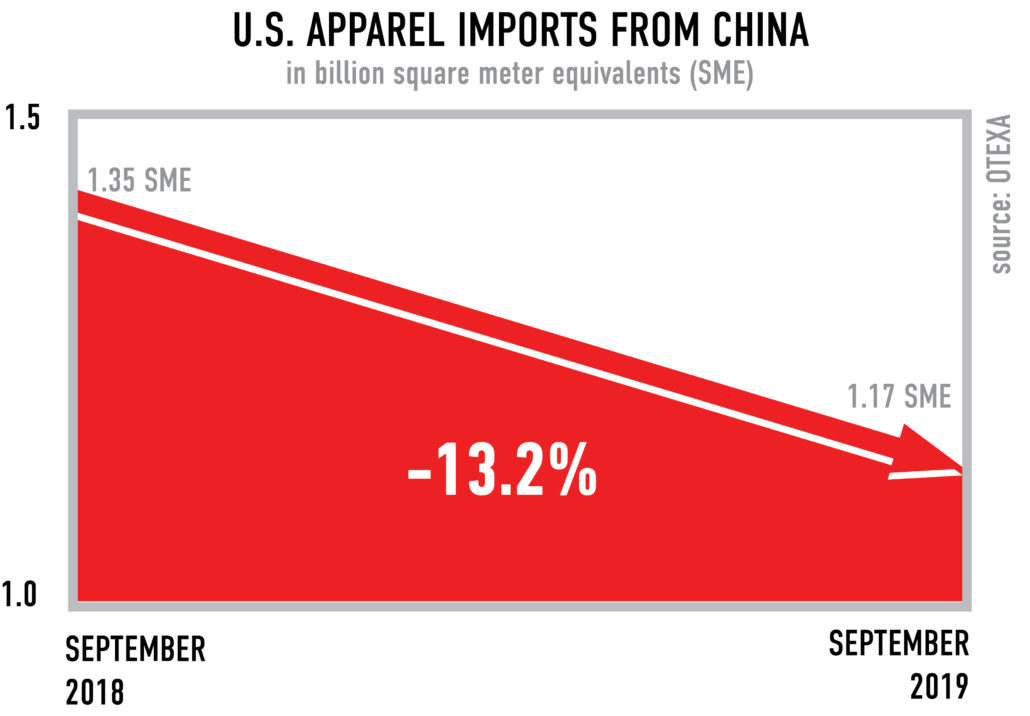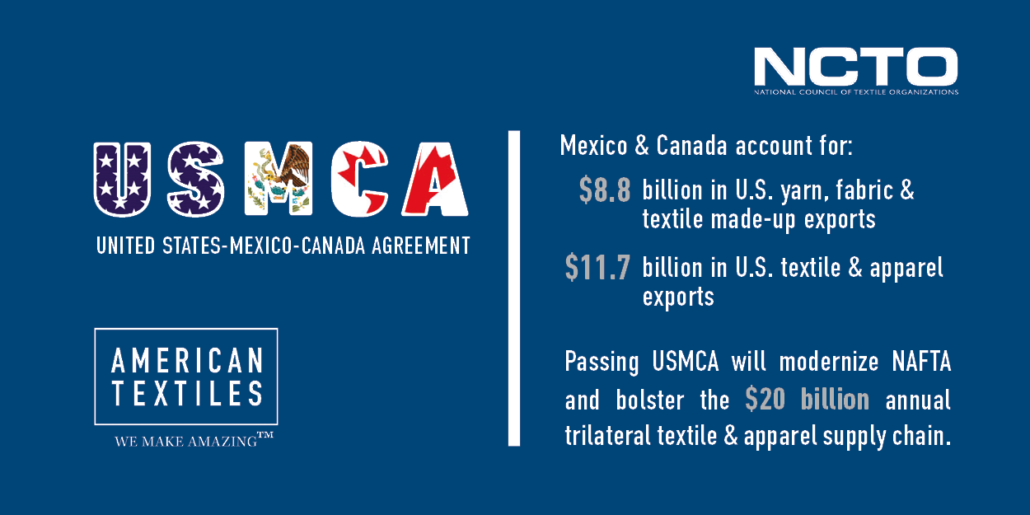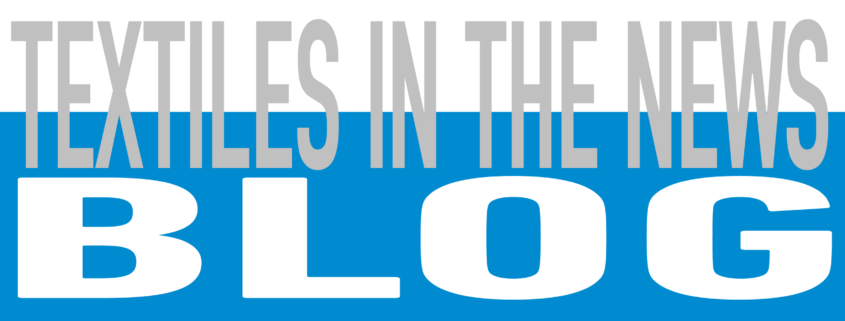The National Council of Textile Organizations (NCTO), representing the full spectrum of U.S. textiles from fiber through finished sewn products, welcomed the deal on the United States-Mexico-Canada Agreement (USMCA) trade pact reached between the administration and House Democrats on Dec. 10.
The deal paves the way for USMCA legislation to advance in Congress and NCTO will be fully engaged in helping move the trade deal across the finish line. The House and Senate must vote on USMCA and all three countries must ratify the trade deal before it can be implemented.
In this blog post, NCTO interviewed four U.S. textile CEOs who outlined how the provisions and improvements in USMCA will benefit their companies. These companies represent a sampling of the larger U.S. textile base, which will see broad-based improvements if the trade deal is implemented.
In 2018, the top 5 states representing textile employment were Georgia, North Carolina, South Carolina, California and Virginia.
The new USMCA, which updates and modifies the North American Free Trade Agreement (NAFTA), would greatly benefit the U.S. textile industry and bolster the industry’s $20 billion in annual trilateral textile and apparel trade. U.S. textile exports to Canada and Mexico—the industry’s top two export markets—totaled nearly $12 billion in 2018, underscoring the importance of the trade deal to the industry’s Western Hemisphere supply chain as well as its growth and investment in the U.S.
NCTO worked with the administration during negotiations on USMCA and successfully lobbied for several provisions that were incorporated in the trade deal that will close loopholes and strengthen U.S. Customs enforcement.
The USMCA includes the following provisions aimed at helping strengthen and bolster business in the Western Hemisphere:
- Creation of a separate chapter for textiles and apparel rules of origin with strong customs enforcement language.
- Stronger rules of origin for sewing thread, pocketing, narrow elastics and certain coated fabrics. Under the current NAFTA, these items can be sourced from outside the region—USMCA fixes this loophole and ensures these secondary components are originating to the region.
- Fixes the Kissell Amendment, Buy American loophole, ensuring that a significant amount the Department of Homeland Security spends annually on clothing and textiles for the Transportation Security Administration is spent on domestically produced products.
The following textile executives provide insight into the implications of USMCA for their businesses and urge Congress to swiftly pass the trade deal.
COTSWOLD INDUSTRIES INC.:
The USMCA trade deal will provide benefits for the entire U.S. textile supply chain, which has built a strong and well-established industry over the past 25 years under NAFTA, and stands to gain even more under the modified trade pact.
For New York-based Cotswold Industries, a vertically integrated textile engineering and marketing company that manufactures and distributes technical barriers, knitted and woven industrial fabrics and non-woven substrates to the apparel, industrial, military commercial workwear and home sewing markets, the new provisions in the trade pact will not only help provide certainty and stability in the Western Hemisphere but will also secure new opportunities.
James W. McKinnon, CEO, Cotswold Industries Inc., said his company exports a wide variety of fabrics to Mexico that account for more than 30-40 percent of its total exports.
“For us, the NAFTA agreement itself—and now the USMCA—is absolutely critical to maintaining the jobs and the business that we currently have, and that runs the gamut from automotive to home furnishings to apparel,” McKinnon said. “All of those sectors are critically important to maintaining the free flow of goods over the border and it’s mutually beneficial for not just the U.S. textile industry but for workers in Mexico and ultimately the U.S. consumer.”
Over the past 25 years, NAFTA has provided a “tax free, duty-free environment” that encourages shorter lead times,” he said.
U.S. textile producers have also benefited from the close proximity of Mexico to the United States as brands and retailers invested in the model of Just-In-Time manufacturing. With the explosion of online shopping, quicker deliveries have become even more critical with a greater reliance on manufacturing hubs closer to the U.S.
“NAFTA has been a counterbalance to cheaper goods from China and Bangladesh, especially in the industries where quick turn-around times and quick response is important,” McKinnon said. “NAFTA and USCMA allow that process to continue and allow us to be competitive to lower cost Asian production.”
McKinnon said the Western Hemisphere supply chain began to stabilize between 2005-2010 after offshoring in the 1980s and 1990s, which lead to a significant exodus of apparel business to Asia.
“The infrastructure in Mexico has been the leading cause of business staying there,” McKinnon said. “There was a huge investment there and that production is now mature and that infrastructure established. It is a known commodity that U.S. brands will take advantage of.”
USMCA will help maintain that critical supply chain, while opening new business opportunities for U.S. textile manufacturers.
Cotswold will be a beneficiary of stronger customs enforcement in USMCA as well as the fix in the Kissell Amendment, Buy American loophole, which will require the Department of Homeland Security and the Transportation Security Administration to purchase a significant amount of domestically produced inputs for its uniforms.
HAMRICK MILLS INC.
Hamrick Mills, Inc., a 119-year-old textile company based in Gaffney S.C., employing 470 people, is well positioned to take advantage of several new provisions in USMCA.
The company is a producer of greige woven fabrics in both poly/cotton blends as well as 100% cotton for use in the home furnishings and apparel and support apparel markets.
Hamrick Mills has built a strong business around the current NAFTA and anticipates new and expanded business with USMCA, said Cameron Hamrick, president of the company.
“I think there is a big desire to have certainty in the North American region. It’s a new trade agreement, which the textile industry gave input on that was later incorporated into the agreement,” Hamrick said. “There is less of a geo-political risk of operating in North America for the US market. Without that certainty, it could easily drive more big end users to Asia.”
He said a portion of the company’s career uniform shirting fabric and hospital scrub material is exported to Mexico for cutting and sewing and shipped back to the U.S. for consumption. Hamrick also sells greige fabric to Mexico for the sheeting market.
“Right now, a significant portion of our total business in the supply chain goes through Mexico,” Hamrick said, adding that the company sells its fabrics to converters, which complete the manufacturing process in Mexico and returns to USA consumers.
The stronger rule of origin for pocketing is a significant component for Hamrick Mills.
“Of course the pocketing provision strengthens the overall demand for textiles in the region because it has a stronger rule of origin, which is a big deal for us,” Hamrick said. “It gives the U.S., Canada and Mexico an opportunity to fill that need that was getting filled by the Eastern Hemisphere because of the exclusions [in NAFTA] for the non-visible components.”
Hamrick said under NAFTA, a majority of pocketing fabric was fulfilled by non-signatory countries, primarily from Asia. USMCA’s strong rule of origin on pocketing and interlinings will allow only the signatory countries in the region to participate duty free. The fix to the Kissell Amendment loophole will also help Hamrick Mills expand its shirting business.
“We do a lot of shirting that we sell for Berry Amendment requirements. We sell products to various [apparel] companies that participate in Berry Amendment uniforms, and we would in turn be able to expand that through the Kissell Amendment requirements, especially in the areas of Homeland Security and TSA.”
“In order to compete on a global level, we need to have USMCA for textiles. That’s for sure.”
Hamrick said the trade agreement is critical to maintaining a Western Hemisphere platform and will create more certainty for the textile industry in North America, which will help our industry grow.
GREENWOOD MILLS INC.
Greenwood Mills, Inc., a 130-year-old textile producer based in Greenwood, South Carolina, is well positioned to take advantage of provisions in the USMCA.
James C. Self III, president and CEO of Greenwood Mills, said the company has two distinct businesses—fabric and apparel.
Under NAFTA, Greenwood has built a significant workwear fabric export business to Mexico, and on the apparel side, the company makes finished blue jeans in Mexico.
Self said one updated provision in USMCA that could be a potential benefit is the strengthened rule of origin for pocketing, which will require pocketing fabric to be produced in the NAFTA region, as opposed to allowing the use of fabric from other countries such as China, which is the case under NAFTA.
“There is a lot of interest over pocketing,” Self said. Under NAFTA, companies can use foreign pocketing fabrics but USMCA closes that loophole and it is an area we are looking at in terms of potential new business,” Self said.
Self said Greenwood is not currently in the pocketing fabric business because NAFTA allowed foreign-made pocketing which undercut U.S. pricing.
During the first few years after NAFTA was implemented in 1994, Self said Greenwood’s denim apparel business in Mexico thrived, although it has since slowed over the past decade as some denim apparel production started to migrate to Asia from Mexico.
“It’s still a significant business for us and the new deal could help that business. Anything that makes NAFTA more competitive against Asia is going to help,” Self said.
“With the great growth in e-commerce, quick turn is going to be more critical to a lot of our retail partners. Mexico is the quickest of the quick turns in this industry,” Self added.
Stronger customs enforcement provisions in USMCA will also help address long-standing and rampant textile fraud, such as transshipments from other countries trying to take advantage of NAFTA’s duty benefits.
Self said the fix to the Kissell Amendment, Buy American loophole for TSA uniforms could also help boost the entire industry.
“If it comes back to the U.S. and is treated the same way as the military, obviously that would be a big boost for Made in USA,” he noted.
INMAN MILLS
Inman Mills, which is based in Inman, S.C., is a textile producer of a diverse range of products, from cotton yarn to highly technical fire retardant fabric, primarily exports bottom weight fabrics to the region, according to Norman Chapman, president and CEO of the company.
“From a pure capacity point of view, USMCA would lead to an increase in volume and I think that would make companies stronger,” he said.
Chapman said the textile industry is a lot smaller since NAFTA took effect 25 years ago, but he noted that it is important to have a better free trade deal for the region, because it creates more volume for the industry overall.
Strengthening the rule of origin for pocketing and linings is a key benefit for companies, he noted.
“These are very competitive products but when they are coming in from outside of the agreement, you don’t even get a chance at bidding on them,” he said. “USMCA will require that they come from the region and it will add volume to this region, which is a good thing.”
For Inman Mills, the revisions closing the Kissell Amendment loophole is an important component of the agreement.
“That would be a significant benefit to us. Those are the types of fabrics that we manufacture,” Chapman said. “With Homeland Security and TSA and the pocketing and lining [modifications] it would give us an opportunity for increased volume.”
Chapman said Inman currently does a limited amount of pocketing but he said “most looms don’t care what they weave,” noting that more volume for the region is good for everyone.

